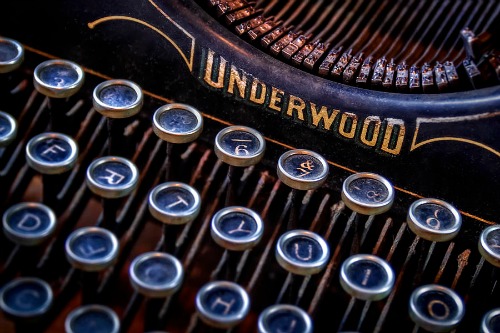
A confluence of stories this week that rocket between new and old, digital and physical. Physical books making a comeback while e-book sales fall. Downloads collapsing as streaming takes hold. Transitions sure are messy…
- Books: Screens Versus Paper Sales of E-books are down. Sales of tablets and E-readers are down. Sales of physical print books are up. And it looks like independent bookstores are doing better, with thousands of new stores opening in the past year or two. So commence the post-apocalyptic celebrations. The digital barbarians have been repelled and print has survived. So how did our screen-o-philia sputter so quickly? This week’s story in the Guardian says that it was techno-hype: “Clearly publishing, like other industries before (and since), suffered a bad attack of technodazzle: It failed to distinguish between newness and value. It could read digital’s hysterical cheerleaders, but not predict how a market of human beings would respond to a product once the novelty had passed. It ignored human nature.” We’re not so sure about that. Books are intimate physical objects, much more so than our TVs or stereos. Might it be that the book habit is just more ingrained in the experience of reading for many people and tough for them to give up, but that as those who grow up with screens mature, they won’t have the same attachment to paper?
- Music: Owning Versus Renting Before iTunes, digital pirates copied and downloaded music, stealing it at a time when people were still buying physical CD copies. Then iTunes came along and made downloading respectable. Having grown up buying records and CDs, conceptually people still wanted to own music. New we’re in the era of streaming, and when services such as Spotify, Apple Music, and Tidal can reliably give you access to millions of recordings with a subscription, there’s really no need to own. So sales of downloads are collapsing fast – 16 percent last year and maybe 30 percent this year, and one analyst predicts not only the end of downloading, but suggests the date it will happen: “Midia Research founder Mark Mulligan, who’s spent more than a decade scrutinizing the digital-music market, predicts the music download business will stutter at around $600 million in 2019—a depressing fall from $3.9 billion in 2012, when Apple’s iTunes Store (the world’s preeminent downloads platform) was at its revenue peak.”
- Music: Then Again, Didn’t We Love Vinyl? Of course we did – er, maybe. So for a few years now, sales of vinyl have been climbing. It’s still a teeny tiny piece of the music business, but vinyl has attained cool factor, and now recording and producing vinyl has become aspirational for some musicians. Borrowing from the slow food movement, they’re calling vinyl “slow listening.” “Why vinyl? Commitment. In this mid-second decade of the 21st century, music is being taken for granted on a collective scale. An entire generation of music listeners will never pay for music, nor do they believe that they should. The long form music medium has taken a back seat to song culture, yet the average person only listens to a song for approximately 24 seconds before deciding if it’s worth their time to continue to listen.”
- Video: It’s All About Video, Say The Experts Every publisher is jumping in to video. It’s where the eyeballs are, it’s where the advertising is going. Facebook video views dwarf other shares. We are a visual culture, after all. And Netflix – everyone wants to be Netflix. Amazon, which already has its Netflix-like streaming service (though not nearly so good, or sexy), now wants a YouTube clone. “With the launch of Amazon Video Direct, open to any video creator, the e-commerce giant will compete head-to-head with Google’s YouTube for video-ad dollars and views as well as other big Internet video distributors like Facebook and Vimeo.” Why bother? The ability for users to contribute their own video makes viewers more loyal. And if Amazon can monetize this user content, home video stars will flock to the service.
- Except You Shouldn’t Believe All The Video Hype: The viewer numbers Facebook and YouTube and others report are staggering – a billion views in some cases. YouTube says it’s got more viewers than all the broadcast networks combined. “The conflation of digital and traditional viewership metrics has gotten under the skin of TV people, and for good reason. If advertisers can be hoodwinked into believing that a sizable number of people are actually watching things on Facebook Live, they will direct their money online, where the ad rates are much, much lower than they are on TV.” But it turns out that the numbers are likely mostly hype. First it’s really hard to get accurate viewership numbers. Second, what, exactly, constitutes a view? It’s likely that the mass turn to video is merely the latest internet hype bubble.
Image: Scott Norris
Who to believe? From the Independent, Nov. 29, 2015:
“Readers shunning physical books for digital ones has contributed to a 58 per cent jump in the number of publishers failing, research has revealed.
“In the year to 30 June, 128 publishers in the UK went out of business, according to the accountancy firm Moore Stephens. The prior year there were 81 insolvencies.
“A rise in popularity of e-readers such as the Kindle has fuelled the increase, said Moore Stephens.
This article suggests that pricing issues have caused the drop in e-book sales, not the e-medium itself:
http://www.bloomberg.com/news/articles/2016-03-07/how-apple-and-big-publishers-pushed-e-books-toward-failure
Paper is seen as something solid and worth money. Anything that is distributed through the air, like radio, television, streaming music, and e-books, has an insubstantial nature that is seen as having less value. People ask why they should pay more for something without paper, binding, printing, warehousing, and transportation costs?